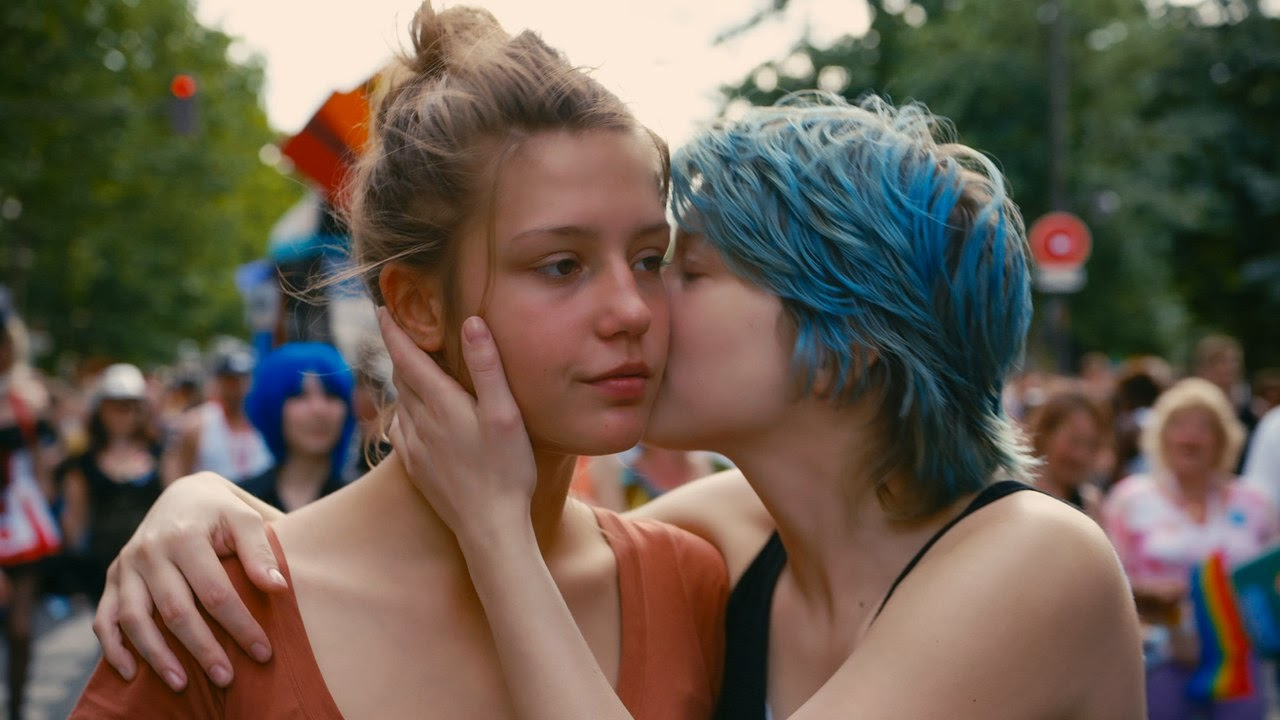First love is a ubiquitous experience. During the honeymoon phase, the feelings it generates create a high that is impossible to maintain. As the real world settles in, the day-to-day experience of love can be hard to navigate if you’re not ready for it. Blue Is the Warmest Color showcases this lesson is just as hard for a lesbian as any other type of relationship. Despite being a bit too long and telegraphing the plot, Blue Is the Warmest Color is a powerful look at navigating the minefield of love.
Adele (Adele Exarchopoulos) is your average high school student. After being pressured by her friends, she starts dating a boy from school, but something feels off. That is, until she locks eyes with Emma (Lea Seydoux) and her blue hair on the street. When Adele pleasures herself that night, Emma lights a fire under her she didn’t know existed. By chance one night, Adele meets Emma at a club, and their mutual ecstasy begins. Blue Is the Warmest Color then makes little leaps forward in time, where we can see how time has caused some strain on Adele and Emma’s relationship, causing tension and temptation to arise.
The stars (specifically Lea Seydoux) of Blue Is the Warmest Color have been fighting with director Abdelladif Kechiche about the explicit nature of the sex scenes. These scenes are about as physical as you can get without being pornography, and the gratuitous line may have been crossed a few times with just how long these scenes go on. However, these scenes focus on the physical connection between the two women and are often shot in close-up, giving the audience a first person look at what each character can see. The scenes aren’t meant to be voyeured and enjoyed by the audience; they are meant to show just how much the women enjoy their mutual attraction.
The plot and drive of Blue Is the Warmest Color is more of a mixed bag. Scenes in school usually discuss a theme from a book and then immediately execute the theme in the next scene; a little mixing of before/after would have been better. The idea of “coming out” hangs out on the periphery, but never gets addressed for Adele, especially to her parents. Such a scene would better develop how strong Emma is and how she can give Adele the strength to accept who she is. However, the third act of the movie benefits greatly from the forced camera intimacy of the first couple acts. When Emma confronts Adele about potential infidelity and especially when they meet up at a coffee shop, the earned connection between the two conflict directly with their emotional mess that fizzles between the two. Blue Is the Warmest Color never goes for emotional catharsis and easy answers, much to the movie’s benefit since it tries to be based in reality.
Adele Exharchopoulos gives one of the best performances I have seen this year. She is naked all over the place: physically, emotionally, subconsciously, etc. She is onscreen for most of this film in extreme close up, and she somehow delivers on all of the complicated emotions she is forced to feel. One scene in particular, after a fight with Emma, Adele has to hold in her inner anguish as she teaches kids how to read and write, but when they all leave the room, she crumples to the floor and pours out her soul in tear form. Adele has to be multiple things in that scene, and she easily acts the hell out of it. Lea Seydoux, despite her public protest, acquits herself well into Emma’s skin. She simultaneously is self-assured but intimately vulnerable.
Blue Is the Warmest Color had me at blue. It is also my favorite color. In addition, it is a powerful showcase of the messy business of loving someone, especially if you’re not really ready to understand what that means. I have a question though: this movie won the Palme D’Or at the Cannes film festival this year (the top prize). Or means gold in French, so shouldn’t the movie’s title be Blue + Gold = Green Is the Warmest color, or would it be too presumptuous to assume it was going to win the top prize at Cannes?

